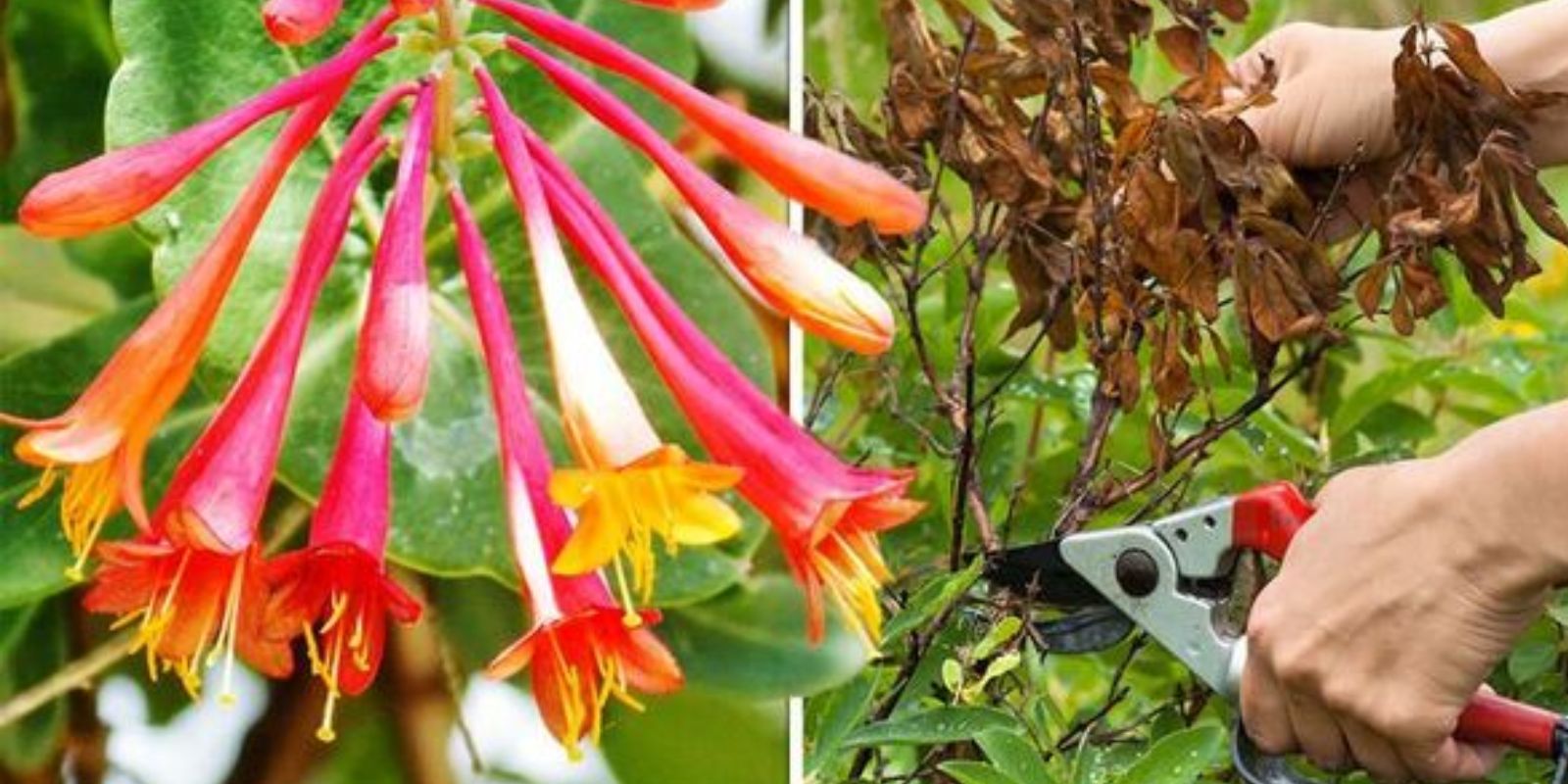Honeysuckle, with its enchanting fragrance and vibrant blooms, is a favorite among gardeners. Whether you’re growing it as a climbing vine or a bushy shrub, proper pruning is vital to keep your honeysuckle thriving, prevent overgrowth, and ensure a stunning display year after year. In this comprehensive guide, we’ll delve into three essential methods for pruning honeysuckle, ensuring your plant remains healthy, manageable, and beautiful.
Why Pruning Honeysuckle is Essential
Honeysuckle is known for its rapid growth and ability to flourish in various conditions. Without regular pruning, however, it can quickly become overgrown, reducing air circulation and making it susceptible to diseases. Pruning helps:
- Encourage New Growth: Removing old or dead stems promotes vigorous new shoots.
- Improve Flowering: Regularly trimmed plants bloom more abundantly.
- Maintain Shape: Pruning helps keep the plant under control and aesthetically pleasing.
- Prevent Diseases: Clearing out crowded or damaged areas improves airflow and reduces the risk of fungal infections.
Now, let’s explore the three key pruning techniques for honeysuckle care.
1. Routine Maintenance Pruning
When to Do It: Anytime during the growing season, but ideally in early spring or late winter.
Routine maintenance pruning involves regular trimming to remove damaged, diseased, or dead parts of the plant. This practice keeps your honeysuckle in good health and prevents the spread of diseases.
Steps:
- Inspect the Plant: Look for broken or dying branches and leaves.
- Cut Back Damaged Areas: Using sterilized pruning shears, trim the damaged or dead stems down to the base or just above healthy growth.
- Tidy Up Straggly Growth: Remove weak or overcrowded shoots to improve the overall structure.
- Dispose of Pruned Material: Clear away debris to prevent pests and diseases from lingering.
Pro Tip: Sterilize your tools with rubbing alcohol before and after pruning to avoid spreading diseases.
2. Rejuvenation Pruning
When to Do It: Late winter or early spring every 2-3 years.
Rejuvenation pruning is a more drastic approach that involves cutting back most of the plant to revitalize it. This method is perfect for older honeysuckle plants with woody, overgrown stems or those that haven’t been pruned in years.
Steps:
- Prepare the Plant: Water the plant thoroughly a day before pruning to reduce stress.
- Cut Back Drastically: Trim all stems to about 12-24 inches above the ground. This encourages fresh, vigorous growth.
- Focus on the Base: Clear out the oldest, thickest stems to make room for new ones.
- Feed and Mulch: Apply a balanced fertilizer and mulch to support the plant’s recovery.
Pro Tip: Avoid rejuvenation pruning during the height of the growing season as this can shock the plant.
3. Shaping After Blooming
When to Do It: Immediately after the flowering period.
This method is perfect for managing honeysuckle vines and shrubs that bloom on old wood. By pruning right after the flowering period, you ensure the plant has enough time to grow and set buds for the next season.
Steps:
- Deadhead Spent Blooms: Remove faded flowers to tidy up the plant and redirect energy to new growth.
- Trim Excess Growth: Cut back overgrown stems that are sprawling or tangled. For climbers, focus on training the vines along your trellis or support structure.
- Shape the Plant: Use pruning shears to sculpt the plant into a neat, desired shape.
- Thin Out Crowded Areas: Remove some inner branches to improve airflow and light penetration.
Pro Tip: Always use clean and sharp tools to make clean cuts, which heal faster and reduce the risk of infections.
Common Mistakes to Avoid
- Over-Pruning: Cutting back too much can stress the plant and reduce flowering.
- Pruning at the Wrong Time: Avoid pruning during late fall, as it can stimulate growth that won’t survive the winter.
- Neglecting Tools: Dull or dirty tools can damage stems and introduce diseases.
- Ignoring Old Wood: Old, woody stems often produce fewer flowers. Remove them during rejuvenation pruning to encourage fresh growth.
Additional Honeysuckle Care Tips
- Support for Climbers: Install a sturdy trellis or fence to guide climbing varieties.
- Watering Needs: Keep the soil moist but not waterlogged. Mulching helps retain moisture.
- Fertilization: Use a balanced fertilizer in early spring to support vigorous growth and flowering.
- Pest Control: Regularly inspect for aphids, spider mites, and mildew, which can affect honeysuckle plants.
Benefits of Pruning Honeysuckle
Pruning not only keeps your honeysuckle in check but also enhances its overall health and aesthetics. Here are some of the top benefits:
- Promotes Better Blooms: Regular pruning redirects energy to flowering shoots, resulting in more vibrant blooms.
- Encourages Compact Growth: Instead of sprawling uncontrollably, the plant grows in a tidy and manageable manner.
- Prevents Disease Spread: Removing damaged parts reduces the risk of fungal infections and pest infestations.
Conclusion: Prune for a Thriving Honeysuckle
Pruning honeysuckle might seem like a daunting task, but with these three effective methods—routine maintenance pruning, rejuvenation pruning, and shaping after blooming—you can ensure your plant remains healthy, vibrant, and manageable. Each technique serves a unique purpose and, when applied correctly, contributes to the overall beauty and longevity of your honeysuckle.
💬 Have you tried pruning your honeysuckle? Share your experience or drop your questions in the comments below! 🌸✨
#HoneysuckleCare #GardeningMadeSimple #PruningTips #PlantCare101 #DIYGarden #GreenThumb #NatureLovers

